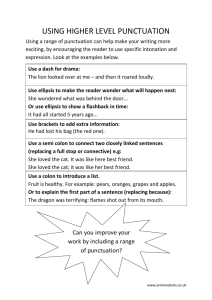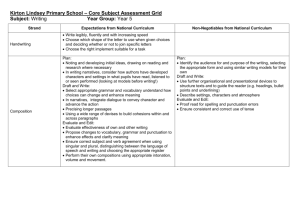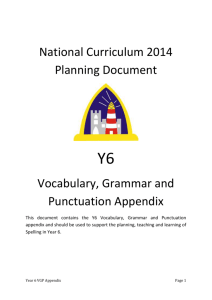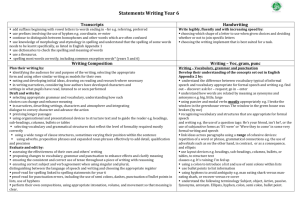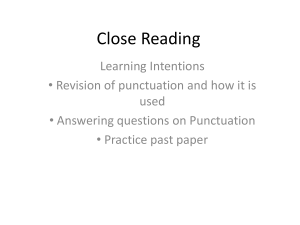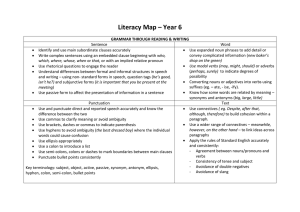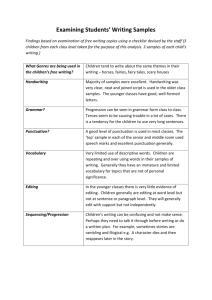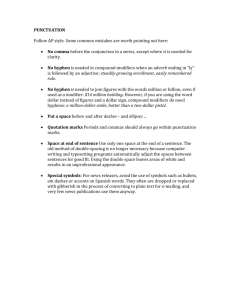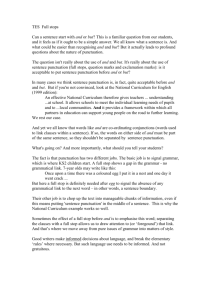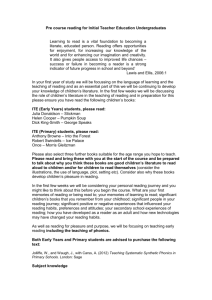Kirton Lindsey Primary School * Core Subject Assessment Grid
advertisement
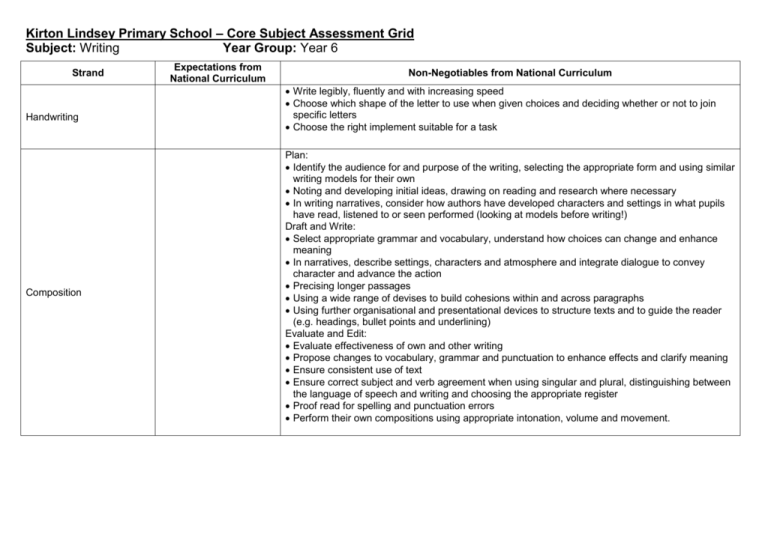
Kirton Lindsey Primary School – Core Subject Assessment Grid Subject: Writing Year Group: Year 6 Strand Handwriting Composition Expectations from National Curriculum Non-Negotiables from National Curriculum Write legibly, fluently and with increasing speed Choose which shape of the letter to use when given choices and deciding whether or not to join specific letters Choose the right implement suitable for a task Plan: Identify the audience for and purpose of the writing, selecting the appropriate form and using similar writing models for their own Noting and developing initial ideas, drawing on reading and research where necessary In writing narratives, consider how authors have developed characters and settings in what pupils have read, listened to or seen performed (looking at models before writing!) Draft and Write: Select appropriate grammar and vocabulary, understand how choices can change and enhance meaning In narratives, describe settings, characters and atmosphere and integrate dialogue to convey character and advance the action Precising longer passages Using a wide range of devises to build cohesions within and across paragraphs Using further organisational and presentational devices to structure texts and to guide the reader (e.g. headings, bullet points and underlining) Evaluate and Edit: Evaluate effectiveness of own and other writing Propose changes to vocabulary, grammar and punctuation to enhance effects and clarify meaning Ensure consistent use of text Ensure correct subject and verb agreement when using singular and plural, distinguishing between the language of speech and writing and choosing the appropriate register Proof read for spelling and punctuation errors Perform their own compositions using appropriate intonation, volume and movement. Punctuation/ Grammar Spelling Sentence structure Use of passive to effect the presentation of information in a sentence (passive/ active voice) The difference between structure typical of informal speech and structures appropriate of formal speech and writing. Text structure Linking ideas across paragraphs using a wide range of cohesive devices: Repetition of a word or phrases Grammatical corrections Ellipsis Understanding of layout devices Punctuation Use of semicolon, colon, and dash to mark the boundary between independent clauses Use of the colon to introduce a list and use of semi colons within lists Punctuation of bullet points to list information How hyphens can be used to avoid ambiguity Terminology Subject, object, active, passive, synonym, antonym, ellipsis, hyphen, colon, semi-colon, bullet points Objectives Endings of : cious, tious, cial, tial, ant, ance, ancey, ent, ence, ency, able, ible, ably,ibly Suffixes beginning with vowel letters to words ending in –fer Use of the hyphen Learning I before e except after c rule and exceptions Words containing the letter string ough Words with silent letters Homophones and other words that are often confused Can spell word list 5/6 Revision Revise work done in previous years
